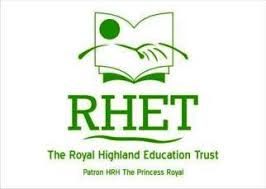Interdependence
We live in a wonderful word that naturally produces an abundance of consumable things, as well as our animals and their produce. As humans we depend on each other to produce and provide these items.
In Scotland we are fortunate enough to have grounds and living conditions good enough for farming to thrive. All over Scotland, we have varying types of farms to ensure all needs are met and that farmers are ensuring they make a profit.
This week we had the opportunity to visit two contrasting dairy farms in Ayrshire. The first of which Strandhead farm, being more technologically focussed and then Mossgiel Farm, which is an organic farm. Personally I didn’t have any expectations of both farms, as I don’t live in the countryside and have never really experienced farming in action.
Technologically advanced farm (Strandhead)
This whole set up wasn’t the best looking from the outside, in fact for someone who doesn’t understand, even myself when I first walked in, it may look unethical or uncomfortable for the Cows.
At Strandhead:
- They had a couple hundred cows.
- The cows stay inside all year round.
- The cows are fed hay by a robot.
- The cows a trained to know when they are ready to be milked and walk into a machine that does so.
- Business method is to produce high yield and sell to producer for low price.
I originally found the set up of the farm concerning, but after having a conversation with the farmer he explained that the cows prefer being inside and are provided with the best conditions possible. He noted that, for him to make money his cows need to be comfortable, happy and healthy, so he will always ensure the best for them.


Organic Farm (Mossgiel)
At Mossgiel:
- Small herd of cows.
- Cows live between shed and outside (depending on weather)
- Cows are only fed grass or mothers milk – no chemical or technological interference.
- Cows produce very high quality milk.
- Business method is to produce high quality milk and sell straight to customers at high price.
My first impressions of this farm was that it was small and was surprised at how little cattle they had. After listening to the farmer, I then understood that he requires less staff, he doesn’t need to pay for expensive equipment like a technologically advanced farm would and they can sell their produce at a higher price. I found it interesting how this method of selling produce could possibly begin to reshape our way of obtaining our dairy products and alter the economic situation for farming.


This experience has opened my eyes to farming in Scotland and made me realise and appreciate the direction it is going in. On these visits we were introduced to RHET (Rural highland education trust), this is a non-profit organisation that has the motive to educate people about farming and agriculture.
 As a teacher, I think that RHET would be a great tool for educating pupils on our own Scottish agriculture and allow children to appreciate where their produce comes from. I think that visits similar to this could enhance and deepen a child’s understanding of farming, and I think this has importance in Scotland especially because we have such a large farming community.
As a teacher, I think that RHET would be a great tool for educating pupils on our own Scottish agriculture and allow children to appreciate where their produce comes from. I think that visits similar to this could enhance and deepen a child’s understanding of farming, and I think this has importance in Scotland especially because we have such a large farming community.
https://www.rhet.org.uk
Relevant experiences and outcomes for the GTCS:
- ‘Having evaluated the role of agriculture in the production of food and raw material, I can draw reasoned conclusions about the environmental impacts and sustainability.’ SOC 4-09a
- ‘Having explored the variety of foods produced in Scotland, I can discuss the importance of different types of agriculture in the production of these foods.’ SOC 1-09a
Educating children about our own agriculture and how we obtain our produce can widen their appreciation of the world around them. This can lead them on the path to becoming effective contributors by educating them on a relevant topic that effects us all as well as making the aware of the journey produce they consume goes on.
Interdependence Group task
To further elaborate on the topic of interdependence, within small groups we were given the task of producing a ‘Piktograph’ focussing on the topic its self. As a group we discovered that the most effective way to complete our task was to divide up the work and assign roles. My role was to gather the information that rest of the group has researched and then produce a ‘Piktograph’ that was interesting, appealing and concise.
Through this task I believe that I developed the skill of being collaborative, as a group we took into consideration each others ideas and input to ensure we worked effectively and fairly. I also think that from making the ‘Piktograph’ I had the chance to be creative and imaginative, these are skills I wouldn’t have thought I would use when covering a topic like interdependence. This just goes to show that all tasks we can incorporate the use of many differing skills.
I enjoyed using a different mode of expressing our knowledge and research. I think that this application would be a useful tool in a classroom to provide a different way of presenting work and giving the opportunity for creativeness and imagination and making lessons multi-modal which could enhance engagement and make a lesson more interesting.
This is the link to the Piktograph we created as a group : https://create.piktochart.com/output/41754797-untitled-infographic
References
- https://create.piktochart.com/output/41754797-untitled-infographic
- https://education.gov.scot/Documents/social-studies-eo.pdf
- https://www.rhet.org.uk/teachers/


